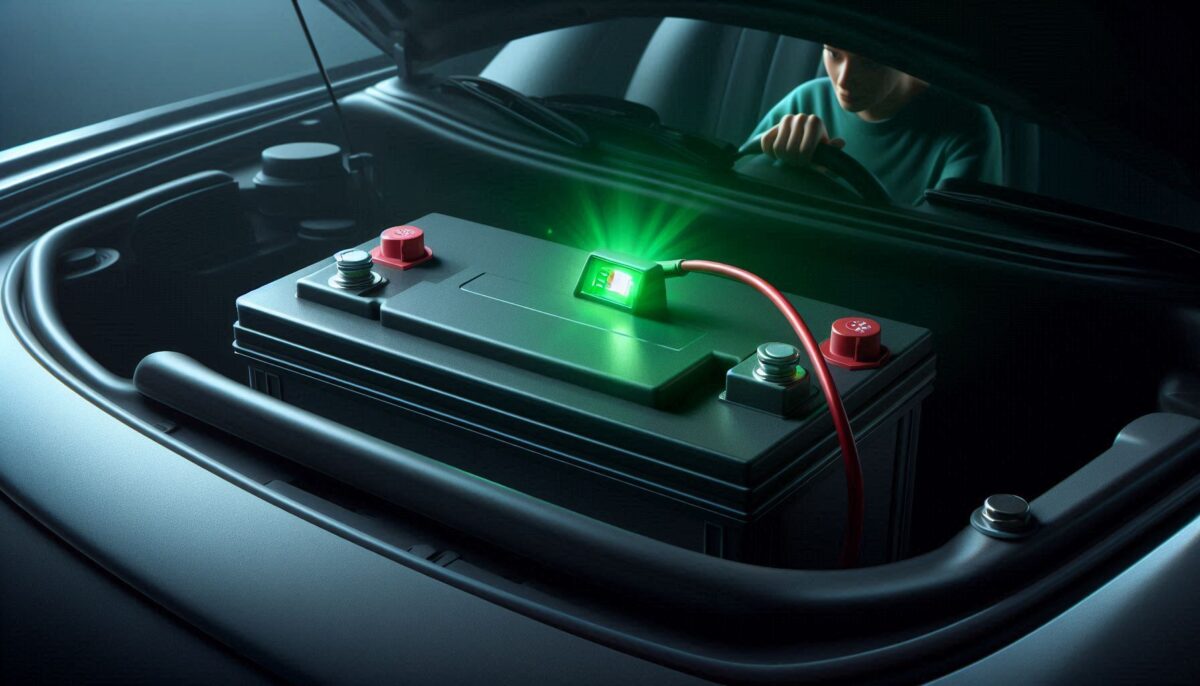How to Check Your Car Battery Health: A Best Guide For You 2024

A car battery is the heart of your vehicle’s electrical system, powering everything from the ignition system to the lights, radio, and electronic systems. Over time, batteries can degrade, leading to a range of problems, including starting issues and decreased performance. Checking the health of your car battery regularly is essential to ensure the reliability and longevity of your vehicle. This article provides a detailed guide on how to check your car battery health, from visual inspections to using specialized tools.
Understanding Your Car Battery
Before delving into the methods to check battery health, it’s important to understand the basic components of a car battery. A typical lead-acid battery consists of six cells, each providing about 2.1 volts, combining to produce a total of 12.6 volts when fully charged. As the battery discharges, its voltage drops, and various factors like age, temperature, and overall usage can affect its performance.

Symptoms of a Failing Battery
Before you start testing your battery, be aware of symptoms that may indicate a failing battery:
- Slow Engine Crank: The engine takes longer to start than usual.
- Electrical Issues: Dimming lights or malfunctioning electronics.
- Dashboard Warning Light: The battery warning light remains on.
- Physical Damage: Corrosion around terminals, or bulging/deformation.
- Old Age: Most batteries last between 3 to 5 years.
If you notice any of these symptoms, it’s time to check the health of your battery.
Steps to Check Car Battery Health
1. Visual Inspection
Begin your battery health check with a thorough visual inspection.
- Check for Corrosion: Examine the battery terminals for white, ashy buildup, which indicates corrosion. This can impede the flow of electricity and may require cleaning.
- Inspect for Damage: Look for cracks, leaks, or other signs of physical damage to the battery casing. Any visible damage may indicate the need for battery replacement.
- Examine Connections: Ensure that the battery cables are securely connected. Loose connections can lead to starting issues and other electrical problems.
2. Check the Battery Voltage
The simplest way to determine battery health is by measuring its voltage using a multimeter.
- Turn Off the Vehicle: Ensure the car is off and has been sitting for a while to get an accurate resting voltage reading.
- Set Up the Multimeter: Turn your multimeter to the DC voltage setting and select a range of 20 volts.
- Attach the Leads: Connect the red lead to the positive terminal and the black lead to the negative terminal of the battery.
- Read the Voltage: A healthy, fully charged battery should read about 12.6 volts or higher. If the reading is between 12.4 and 12.6 volts, it is moderately charged. Below 12.4 volts indicates that the battery is discharged, while a reading below 12 volts means the battery is likely dead or failing.
3. Load Testing
Load testing helps simulate the battery’s performance under normal operating conditions.
- Obtain a Load Tester: You can purchase a battery load tester or take your vehicle to an auto parts store for assistance.
- Connect the Tester: Follow the instructions on the load tester for proper connection to the battery terminals.
- Apply a Load: Most testers will require you to apply a load equal to half the battery’s cold cranking amps (CCA) for 10-15 seconds.
- Read the Results: During the test, the voltage should not drop below 9.6 volts. If it does, your battery needs to be replaced.
4. Check Specific Gravity (for Lead-Acid Batteries)

If you have a traditional lead-acid battery, checking the specific gravity of the electrolyte can provide additional insight into its condition.
- Obtain a Hydrometer: A hydrometer is an inexpensive tool for measuring the specific gravity of battery electrolyte.
- Check the Electrolyte Level: Ensure the battery has sufficient electrolyte cover over the cells.
- Insert the Hydrometer: Squeeze the bulb and insert the tube into a cell of the battery. Release the bulb to draw electrolyte into the hydrometer.
- Read the Specific Gravity: A specific gravity reading of 1.265 or higher indicates a fully charged battery, while readings below 1.225 suggest a discharged or defective battery.
5. Check Battery Age
The age of your battery can also influence its health. Most batteries come with a label indicating the manufacturing date. A battery typically lasts about 3 to 5 years, so if yours is nearing this age, it may be time to consider a replacement, even if it appears functional.
Regular Maintenance Tips
Once you have assessed your battery’s health, maintaining it is crucial to prolong its lifespan.
- Clean Terminals Regularly: Use a mixture of baking soda and water to clean corroded terminals and neutralize acid. Ensure you rinse and dry the terminals afterward.
- Secure and Tighten Connections: Regularly check and tighten the battery connections to avoid electrical issues.
- Avoid Short Trips: Short trips prevent the battery from fully charging. If possible, take longer drives to keep the battery charged.
- Monitor Battery Drain: Disconnect any accessories or devices that may drain the battery when the vehicle is off.
Conclusion
Checking the health of your car battery is an essential task that can save you from unexpected breakdowns and costly repairs. By performing regular visual inspections, measuring voltage, conducting load tests, and maintaining good practices, you can ensure your battery remains in optimal condition. If you have any doubts about your battery’s health after performing these checks, it’s wise to seek professional advice or consider replacing the battery. Taking proactive steps can lead to a more reliable vehicle and a seamless driving experience for years to come.






